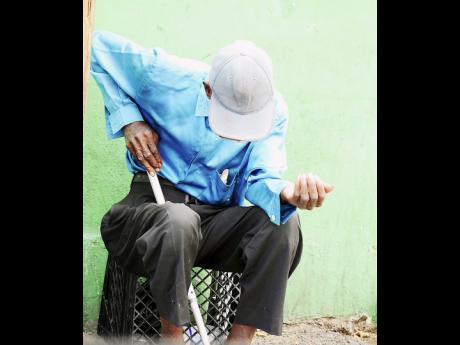Plagued by poverty - Gov't signals it will tackle rising levels of pauperism
Children in Jamaica are among the most vulnerable groups affected by rising poverty levels and account for almost half of those living in poverty, according to the National Policy on Poverty, a White Paper tabled in Parliament on Tuesday. The document unveils Jamaica's National Poverty Reduction Programme.
Other vulnerable groups include persons with disabilities, the homeless, the elderly, youth, as well as those in the category of the working poor.
With poverty levels in Jamaica soaring by 10.7 percentage points over a six-year period spanning 2008 to 2014, the Government has outlined in its policy document how it intends to eradicate extreme poverty and reduce absolute poverty at the national level.
Economic growth key
However, contingent on the poverty-reduction thrust is the achievement of economic growth targets of three per cent annually over the medium term.
In order to achieve the policy goals, other key assumptions have been made by the administration, including adequate budgetary provisions to key programmes and projects; dynamism in the labour market, with the creation of jobs across key growth sectors; and attention to viable rural development initiatives to spread the benefits of development, stimulate market activity, and strengthen rural livelihoods, among others.
Between 2008 and 2014, the rate of poverty jumped from 9.9 per cent to 20.6 per cent.
In 2012, the national poverty prevalence was 19.9 per cent of the population, with the food poor representing 7.5 per cent. For the year 2014, the national poverty prevalence was 20.6 per cent, while the food poverty rate was 8 per cent.
"The policy and programme aim of the Government is to eradicate extreme poverty by 2022 and reduce the national prevalence of poverty to less than 10 per cent by 2030. The eradication of extreme poverty will be targeted within the first two medium-term programmes," the policy paper states.
Jamaica uses an absolute measure of poverty represented by a poverty line. The poverty line indicates the level of consumption needed to maintain an acceptable standard of living at the lowest cost.
The calculation of the poverty line involves the costing of a basket of basic food and non-food items. The food poverty line is defined by the costing of the food portion of the minimum basket. Persons whose consumption is at or below the poverty line are considered to be in absolute poverty, while those who consume below the food poverty line are considered to be in extreme poverty.
In 2012, Jamaica's poverty line was estimated to be $143,687. If an individual's consumption is below this figure, then that person is considered to be in poverty.
Despite weak economic growth and a high debt-to-gross-domestic-product ratio, Jamaica's poverty rates showed a significant downward trend from 1990 to 2007.
According to the policy paper, poverty levels declined among Jamaicans from 28.4 per cent in 1990 to 9.9 per cent in 2007.
However, the onset of the global food crisis in 2007-2008 and the financial and economic crises of the similar period, in addition to structural weaknesses in the economy, led to a reversal of most of the gains made in poverty reduction.


